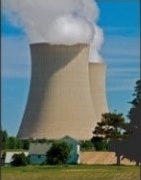By Talia Weiss
Scientists and engineers who contribute to nuclear modernization programs today, or who engage in other defense-related research, may feel they have little in common with physicists working in service of the German government during World War II. The same could be said of scientists who strive to advance emerging technologies such as artificial intelligence and new genetic engineering techniques, which hold great promise but might also be used for ill. Yet researchers working on military and cutting-edge technologies are confronting the same questions that faced nuclear physicists under the Third Reich: As scientists, how can we avoid making (or stumbling into) decisions that do more harm than good? And when is it our responsibility to question, object to, or withdraw from a research project?
The pressures that lead scientists to neglect these questions are arguably most acute for those just starting their careers, who may feel they lack enough status (or job alternatives) to reject exciting research opportunities. As a young scientist who wishes to be conscious of my future impact, I take a personal interest in this issue.
[…]
Building the reactor: a political endeavor. Despite moral qualms with the Nazi regime, German physicists largely failed to decline working for the government—with Hahn and Max von Laue as notable exceptions. (Hahn was tangentially involved with the project, and historians debate his level of engagement.) But since the researchers concentrated on building a reactor, not a bomb, is it fair to excuse their actions as part of a purely scientific endeavor?
This justification has a few serious flaws. For one, working within the Nazi system was automatically political, because it signaled support for the regime. Beyond that, Uranium Club physicists were aware that Nazi war efforts might profit from energy provided by their secret reactor. Gerlach told his colleaguesthat he had assured Nazi officials, “In my opinion the politician who is in possession of such an engine can achieve anything he wants.”
The scientists also understood that the reactor would produce waste that could be reprocessed to yield plutonium—in Diebner’s estimation, enough to power a nuclear bomb within two years. Heisenberg and Harteck had already worked out likely bomb designs. If the Nazis had triumphed in World War II, they would likely have had time to build a nuclear weapon—using knowledge and materials produced by the Uranium Club—to be deployed against Hitler’s enemies during a subsequent conflict. The German nuclear program was therefore not only a scientific venture, but also a political one.
What drove these atomic scientists to work on nuclear power for an evil regime? It appears that the researchers were focused almost single-mindedly on furthering their scientific enterprise—German physics. Working for the Nazis gave them an opportunity to do so. This technical and innovative zeal seems to have blinded them to ethical considerations.
Indeed, when it was becoming clear that the Nazis would lose World War II, the Uranium Club researchers showed no signs of resignation, but instead worked even harder. This hints at the extent to which these scientists acted as if their sole responsibility was advancing German physics.
A revealing conversation. To understand the mentalities of 10 leading German physicists during World War II, historians can look to their reactions to the news that the United States had perfected a nuclear weapon and dropped it on Hiroshima on August 6, 1945. (By then, Allied forces had captured eight German scientists who worked on the Nazi nuclear project, as well as Hahn and von Laue, and detained them in an English house called Farm Hall, where their conversations were covertly taped.) That August evening, shocked by the atomic bombing, the physicists reflected on their own decisions.
Gerlach asked his colleagues, “What were we working for?”
Hahn replied, “To build an engine, to produce elements, to calculate the weight of atoms, to have a mass spectrograph and radioactive elements to take the place of radium.”
This exchange is striking for two reasons: First, Hahn’s emphasis on technical aims—he made no mention of the Nazi Party, the German public, or the war—displays a narrow focus on scientific progress. Second, Gerlach’s question exemplifies how, at Farm Hall, issues of right and wrong appeared to bubble to the surface for the first time—as if the physicists had neglected to discuss them during years of working together.
[…]
Heisenberg had a similar worry. He remarked, “In the case of inventions, surprises can really only occur for people who have not had anything to do with it. It’s a bit odd [that we could have missed something] after we have been working on it for five years.”
Moral confusion. At Farm Hall, the physicists’ first reaction to the Hiroshima news report was a scientific discussion, but their second response was a political one. The German atomic scientists appeared to realize, perhaps for the first time, that a great deal of moral confusion surrounded their work.
As the evening progressed, more and more questions concerning justice and ethics occurred to the physicists: Are atomic weapons inherently inhumane, and should they never be used? If the Germans had come to possess such weapons, what would be the world’s fate? What constitutes real patriotism in Nazi Germany—working for the regime’s success, or its defeat? The scientists expressed surprise and bafflement at their colleagues’ opinions, and their own views sometimes evolved from one moment to the next. The scattered, changing opinions captured in the Farm Hall transcripts highlight that, in their five years on the Nazi nuclear program, the German physicists had likely failed to wrestle meaningfully with these critical questions.
[…]
For instance, engineers who develop tracking or facial-recognition systems may be creating tools that can be purchased by repressive regimes intent on spying on and suppressing dissent. Accordingly, those researchers have a certain obligation to consider their role and the impact of their work.
My recent personal examination of the Farm Hall transcripts has led me to consider this issue as I survey my own career choices. Reading through job postings for young physicists, I have noticed plenty that could raise ethical questions (though there is a debate to be had over whether to reject such jobs). These positions include, for example, working as an engineer developing technology for military drones, or working to maintain and advance the US nuclear arsenal.
[…]
A query for each of us scientists to consider is, “Do I want to contribute to a culture of complacency, or of questioning?” […]
Read more.




